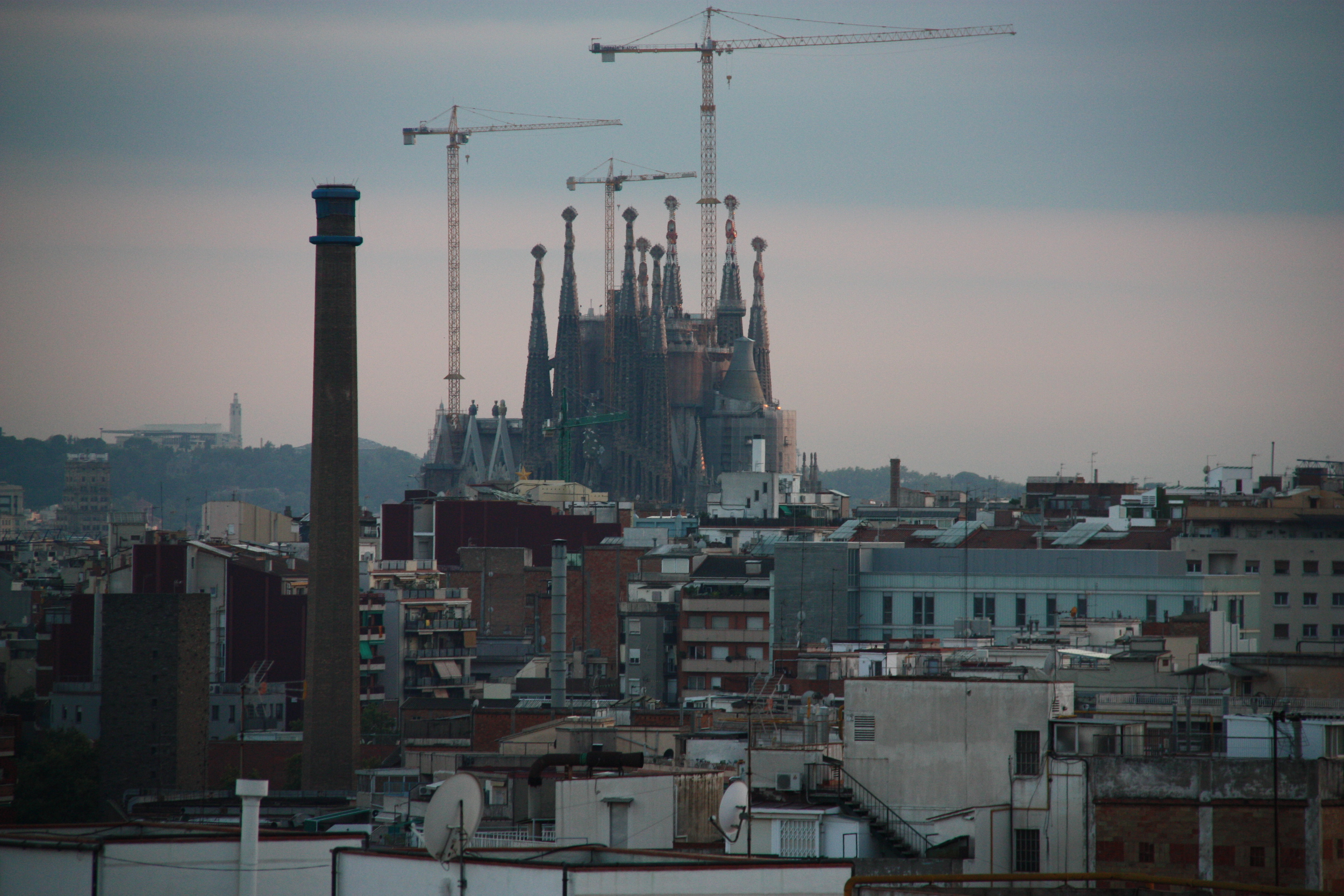Sagrada Família enters final construction phase
The final phase of construction of the Sagrada Família basilica in Barcelona has begun. In two years’ time, the six central towers will already be visible and by 2023 they will be complete, making it the tallest religious building in Europe. Barcelona’s most iconic building is expected to be completed by 2026, to coincide with the 100th anniversary of architect Antoni Gaudí’s death. The construction work is currently focused on the transept, a room that wasn’t planned by Gaudí, and that is set to bear the weight of Jesus tower, the biggest one, which will be 172.5 m high. The transept room will also be used as a landing space for visitors before they start the ascent to the tower. Audiovisual projections showing the progress of the work on the building will also be exhibited in the transept room, which has already been set up with stone stands for visitors. The work on Sagrada Familia represents 25 million euros in annual investment and the basilica is visited by more than 3 million people every year.

Barcelona (CNA).- Barcelona’s most iconic building, the Sagrada Família basilica, enters its final construction phase. In two years’ time, the six central towers will already be visible and by 2023 they will be complete, making it the tallest religious building in Europe. The construction work is currently focused on the transept, a room that wasn’t planned by architect Antoni Gaudí, and that is set to bear the weight of Jesus tower, the biggest one, which will be 172.5 m high. Further areas under construction include the west sacristy, where two of Gaudí’s original pieces of furniture will be displayed and the six central towers. The architectural director of Sagrada Família, Jordi Taulí, has confirmed that the construction of the central towers “has already started”with the column supports, stone and iron blocks six metres high and five metres wide, currently being constructed in the workshop outside the basilica. The work on Sagrada Familia represents an annual investment of 25 million euros and the whole building is expected to be completed by 2026, to coincide with the 100th anniversary of Gaudí’s death.
The building of the Sagrada Família’s six central towers has already started. Current architectural director of Barcelona’s most iconic building, Jordi Taulí, has confirmed that the stone which will be used to build the towers is already being treated and that the six-metre high and five-metre wide stone blocks which will support the columns are being constructed in the workshop outside the basilica. The towers will be visible by 2017 and completed by 2023, including the pinnacles which will top the towers.
The current construction phase is also focused on the transept, a room that wasn’t planned by Gaudí, and that is set to bear the weight of Jesus tower, the biggest one, which will be 172.5 m high. The transept room will also be used as a landing space for visitors before they start the ascent to the tower. Audiovisual projections showing the progress of the work on the building will also be exhibited in the transept room, which has already been set up with stone stands for visitors.
The Sagrada Família work, which represents an annual investment of 25 million euros, has also advanced in other directions. In the last months, all the panels composing the west sacristy’s dome have been put in place and work is now focused on building the top part. Inside, the lower level is being established as the basilica sacristy, which will hold two of Gaudí’s original pieces of furniture.
The paving is also being placed, as is the wooden and glass closing which will separate the cloisters from the other sections. This is expected to be completed by the end of 2015.
More than 3 million people visit Sagrada Familia, Barcelona’s most iconic building, every year. Antoni Gaudítook over its design in 1883 until his death on 10 June 1926 and since then the basilica has been under construction almost uninterruptedly. The pace of construction has accelerated in the last 10 years and the building is expected to be entirely completed by 2026, to coincide with the 100th anniversary of Gaudí’s death.